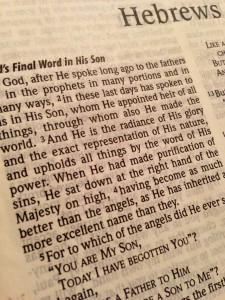 Dr. Sam Storms following a rigorous and careful study of the Scriptures, we implemented formal church membership here at Bridgeway. One of the biblical texts that moved us in that direction was the reference to the people in the local church as being in the “charge” of the Elders (1 Peter 5:3). Some may translate this as “those allotted to you,” or those for whom you bear responsibility.
Dr. Sam Storms following a rigorous and careful study of the Scriptures, we implemented formal church membership here at Bridgeway. One of the biblical texts that moved us in that direction was the reference to the people in the local church as being in the “charge” of the Elders (1 Peter 5:3). Some may translate this as “those allotted to you,” or those for whom you bear responsibility.
In my opinion, there’s no way to escape the fact that this exhortation to Elders implies some expression of formal membership in the local church.
Of course Elders can and should extend their love to anyone and everyone, within the limits of their ability. But the question is whether the Bible tells Elders that they are to have a special responsibility and care for a certain group, a group of covenant members. Consider Acts 20:28 where Paul tells the Elders how to care for their flock.
“Pay careful attention to yourselves and to all the flock, in which the Holy Spirit has made you overseers, to care for the church of God, which he obtained with his own blood.”
This verse does not say Elders cannot visit unbelievers or those who are not yet members. But it does make clear that their first responsibility is to a particular flock. How are they to know who their flock is? Who are we as Elders and Pastors responsible for? For whom will we give an account to God?
“Those in your charge” (your portion, your lot) implies that the Elders knew whom they were responsible for. This is just another way of talking about membership. If a person does not want to be held accountable by a group of Elders or be the special focus of the care of a group of Elders, they will resist the idea of membership. And they will resist God’s appointed way for them to live and be sustained in their faith.
Church membership is also implied in the biblical requirement of Christians to be submitted to a group of church leaders, Elders, or Pastors. The point here is that without membership, who is it that the New Testament is referring to who must submit to a specific group of leaders? Some kind of expressed willingness or covenant or agreement or commitment (that is, membership) has to precede a person’s submission to a group of leaders.
Consider the way the New Testament talks about the relationship of the church to her leaders.
“Obey your leaders and submit to them, for they are keeping watch over your souls, as those who will have to give an account” (Hebrews 13:17).
“We ask you, brothers, to respect those who labor among you and are over you in the Lord and admonish you, and to esteem them very highly in love because of their work” (1 Thessalonians 5:12-13).
“Let the elders who rule well be considered worthy of double honor, especially those who labor in preaching and teaching” (1 Timothy 5:17).
How are this leadership and this submission going to work if there is no membership defining who has made the commitment to be led and who has been chosen as leaders? If we downplay the importance of membership, it is difficult to see how we could take these commands to submit and to lead seriously and practically.


